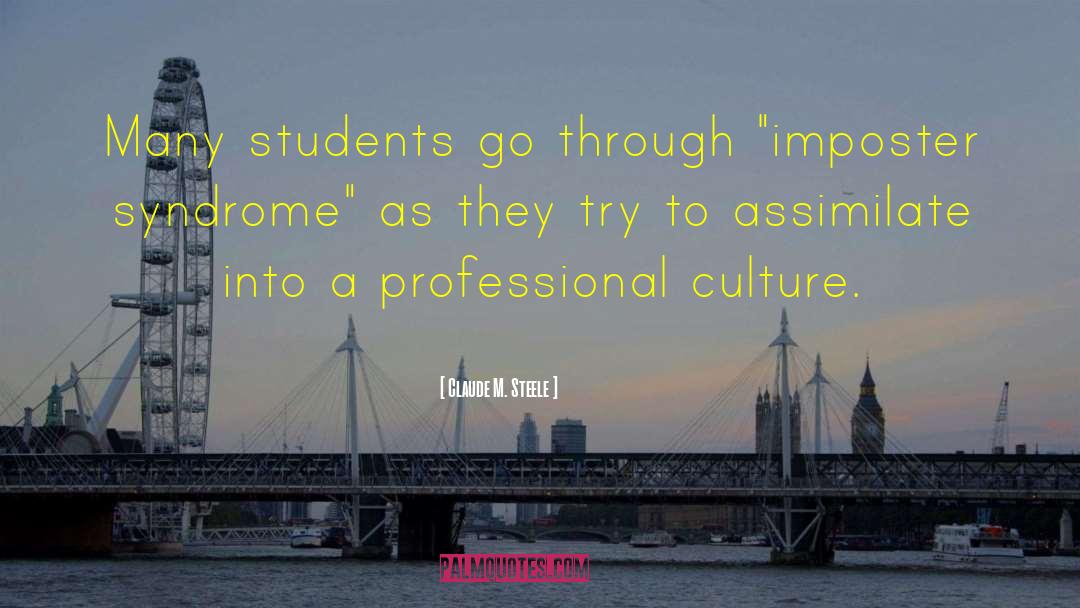Claude M. Steele Famous Quotes
Reading Claude M. Steele quotes, download and share images of famous quotes by Claude M. Steele. Righ click to see or save pictures of Claude M. Steele quotes that you can use as your wallpaper for free.
As I hope this list of "integration concerns" illustrates, not every identity threat comes from prejudiced people. Think about O'Connor on the Supreme Court before Ginsburg. Many of the contingencies she dealt with had little to do with prejudice among her fellow justices or her staff. Some of them may have been prejudiced, but her problems went beyond that: a Court that was dominated by male sensibilities and referents and that was less sensitive, in its functioning, to the perspectives of women; no critical mass of women with which to give her a sense of belonging on the Court; negative stereotypes about women in the larger society and in the legal world that were available for use in judging her work; the fact that her being the only woman on the Court made her the sole representative of her sex in each Court decision; and so on. O'Connor would have had to deal with these things even if there hadn't been an iota of sexism in any of the people she worked with.

Some years ago, two social psychologists, Edward Jones and Richard Nisbett, argued that when it comes to explaining people's behavior-something like achievement problems, for example there is a big difference between the "observer's perspective"-the perspective of a person observing the behavior-and the "actor's perspective"-the perspective of a person doing the behavior. As observers, Jones and Nisbett said, we're looking at the actor, the person doing the behavior we are trying to explain. Thus the actor dominates our literal and mental visual field, which makes the circumstances to which he is responding less visible to us. In the resulting picture in our minds, the actor sticks out like a sore thumb and the circumstances to which he is responding are obscured from view. Jones and Nisbett held that this picture causes a bias when we try to explain the actor's behavior. We emphasize the things we can see. We emphasize things about the actor-characteristics, traits, and so on-that seem like plausible explanations for her behavior. And we deemphasize, as causes of her behavior, the things we can't see very well, namely, the circumstances to which she is adapting.

Negative stereotypes about our identities hover in the air around us. When we are in situations to which these stereotypes are relevant, we understand that we could be judged or treated in terms of them. If we are invested in what we're doing, we get worried; we try to disprove the stereotype or avoid confirming it. We present ourselves in counter-stereotypical ways. We avoid situations where we have to contend with this pressure. It's not all-determining, but it persistently, often beneath our awareness, organizes our actions and choices, our lives - like how far we walk down the aisle of an airplane to find a seat, or how well we do on a round of golf, or on an IQ test. We think of ourselves as autonomous individuals. After all, we make choices. But we often forget that we make choices within contexts, always. And pressure tied to our social identities is a component of these contexts. This is difficult to appreciate by reflecting on our experience. And yet, as I've have urged throughout this book, it is precisely these pressures that make a social identity real for us.
Stereotype threat is a broad fact of life.
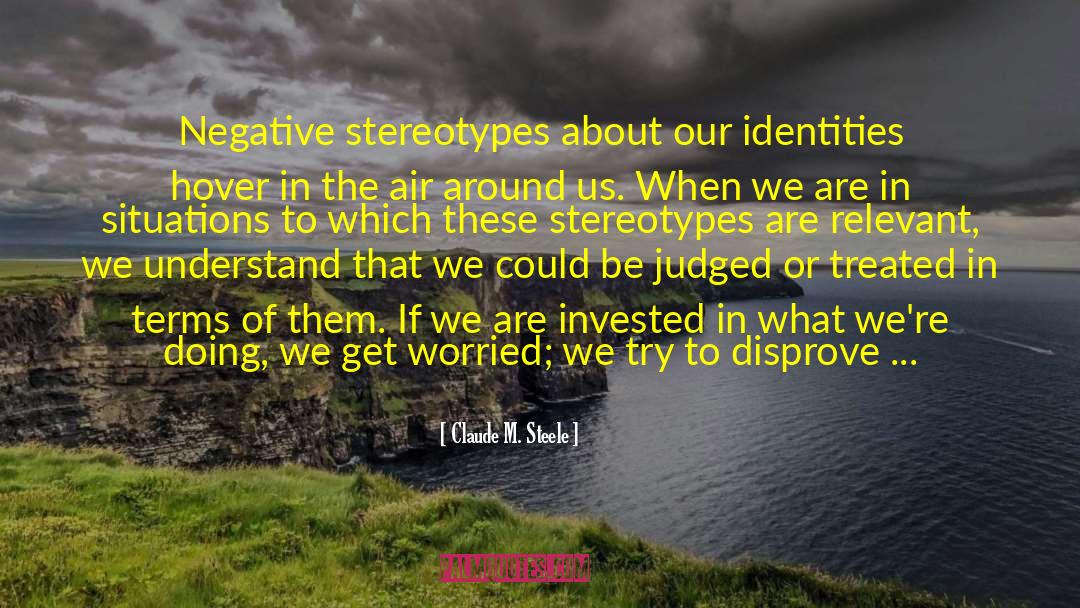
I became an expert in the language of fear. Couples locked arms or reached for each others' hands when they saw me. Some crossed to the other side of the street. People who were on conversations went mute and stared straight ahead, as though avoiding my eyes would save them .. I'd been walking the streets grinning good evening at people who were frightened to death of me. I did violence to them by just being - Brent Staples
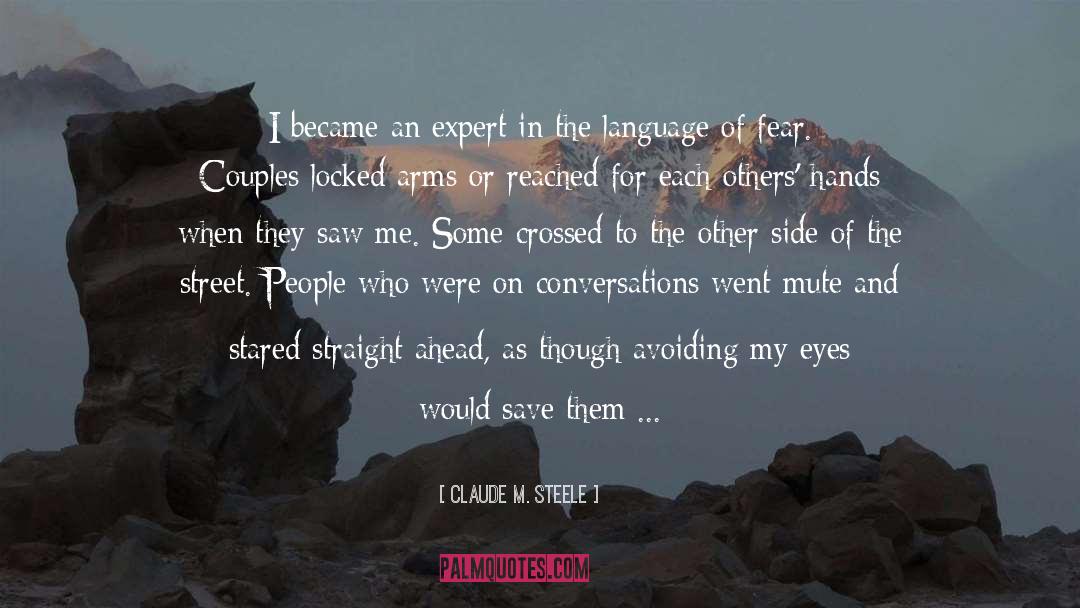
The problem is that the pressure to disprove a stereotype changes what you are about in a situation. It gives you an additional task. In addition to learning new skills, knowledge, and ways of thinking in a schooling situation, or in addition to trying to perform well in a workplace like the women in the high-tech firms, you are also trying to slay a ghost in the room, the negative stereotype and its allegation about you and your group. You are multitasking, and because the stakes involved are high--survival and success versus failure in an area that is important to you--this multitasking is stressful and distracting.
...And when you realize that this stressful experience is probably a chronic feature of the stetting for you, it can be difficult for you to stay in the setting, to sustain your motivation to succeed there. Disproving a stereotype is a Sisyphean task; something you have to do over and over again as long as your are in the domain where the stereotype applies. Jeff seemed to feel this way about Berkeley, that he couldn't find a place there where he could be seen as belonging. When men drop out of quantitative majors in college, it is usually because they have bad grades. But when women drop out of quantitative majors in college it usually has nothing to do with their grades. The culprit, in their case, is not their quantitative skills but, more likely, the prospect of living a significant portion of their lives in a domain where they may forever have t
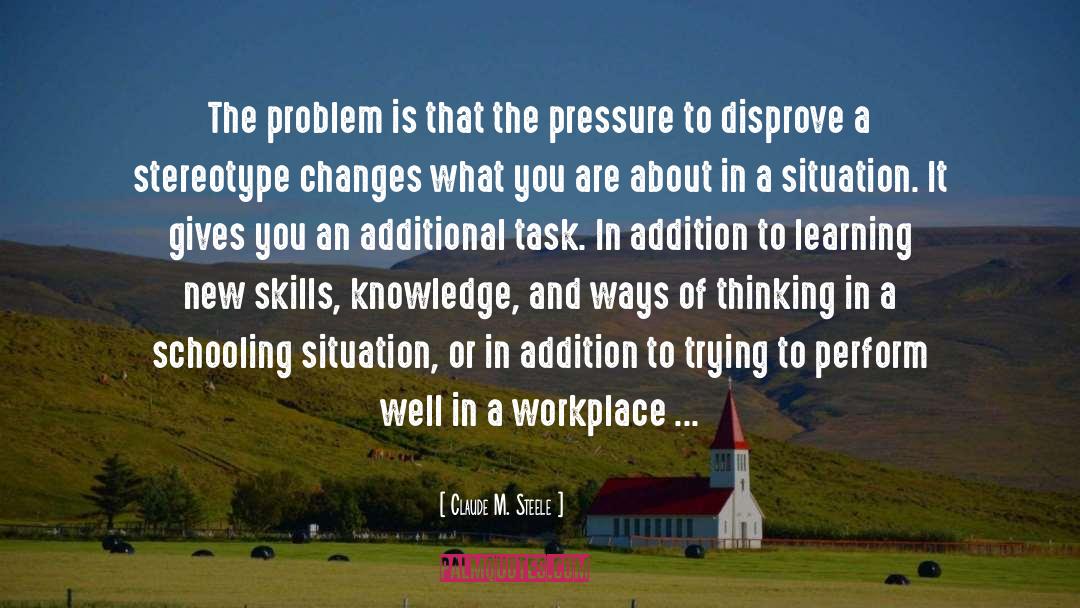
The effective, identity-safe practices "avoid cues that might instantiate a sense of stereotype threat in students and are, instead, aimed at making everyone in the class feel...as valued and contributive...regardless of their ethnic group or gender." [Dorothy Steele]
...The cohering principle is straightforward: they foster a threat-mitigating narrative about one's susceptibility to being stereotyped in the schooling context. And though no single, one-size-fits-all strategy has evolved, the research offers an expanding set of strategies for doing this: establishing trust through demanding but supportive relationships, fostering hopeful narratives about belonging in the setting, arranging informal cross-group conversations to reveal that one's identity is not the sole cause of one's negative experiences in the setting, representing critical abilities as learnable, and using child-centered teaching techniques. More will be known in the years ahead. But what we know now can make a life-affecting difference for many people in many important places.

Stereotype threat, then, is one way our national history seeps into our daily lives. That history leaves us with stereotypes about groups in our society that can be used to judge us as individuals when we're in situations where those stereotypes apply - in the seat next to a black person on an airplane or interacting with minority students, for example. The white person in that situation will not want to be seen in terms of the stereotype of whites as racially insensitive. And the black person, for his or her part, will not want to be seen in terms of the stereotypes about blacks as aggressive, or as too easily seeing prejudice, and so on. Fighting off these possible perceptions on a long airline flight - or more famously, perhaps, in a school cafeteria - could be more than either party wants to take on. They just want to have lunch or get to Cleveland. Avoidance becomes the simplest solution.
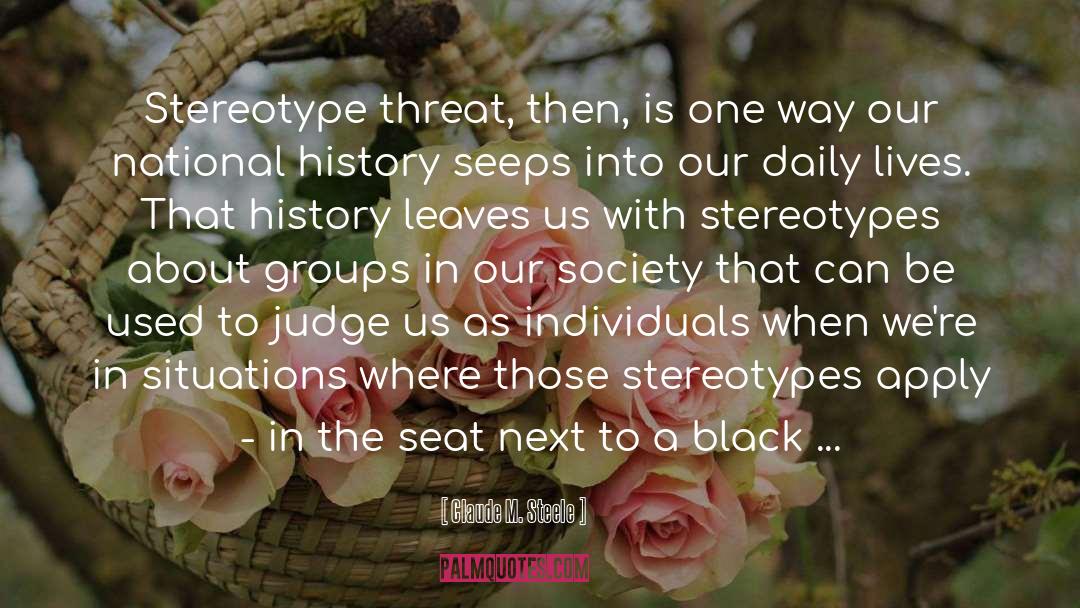
Many students go through "imposter syndrome" as they try to assimilate into a professional culture.
